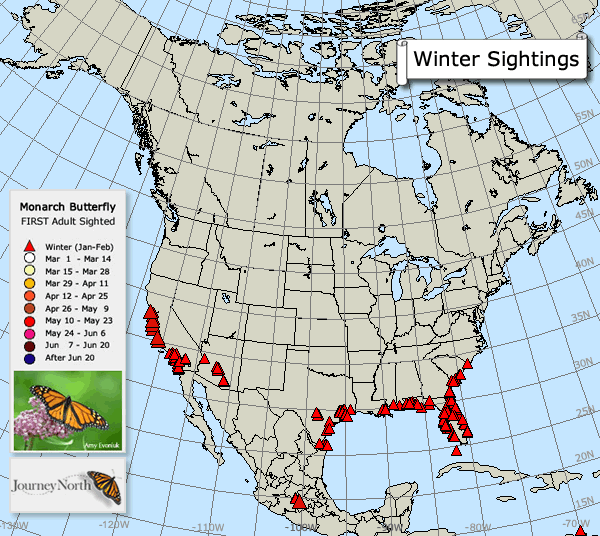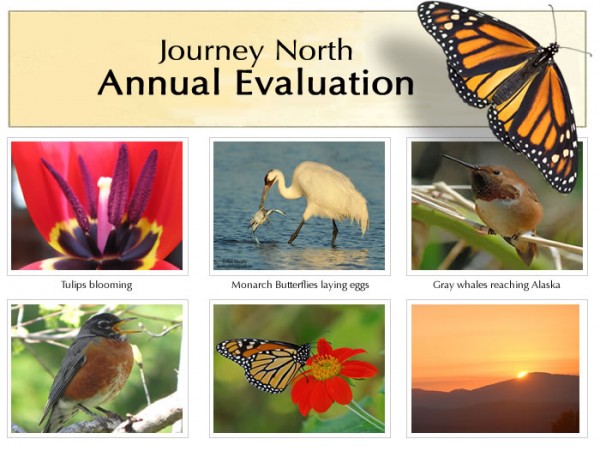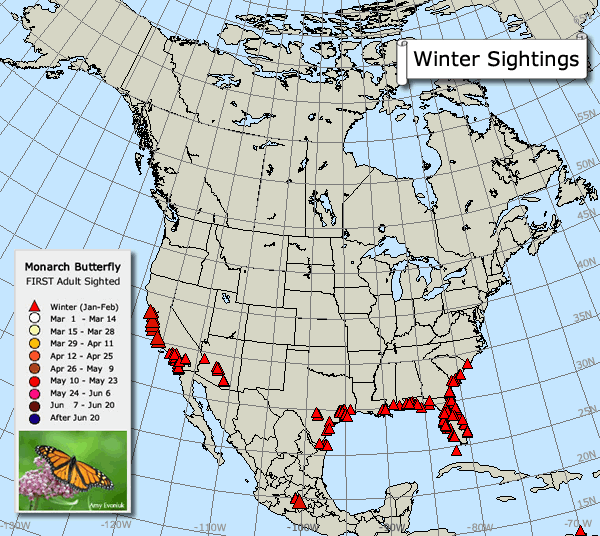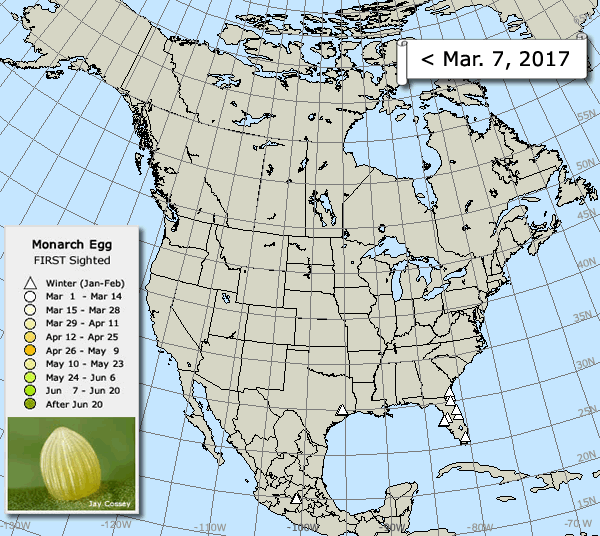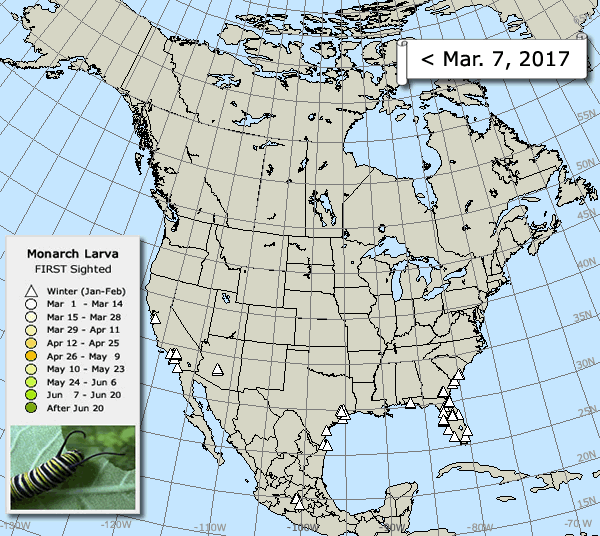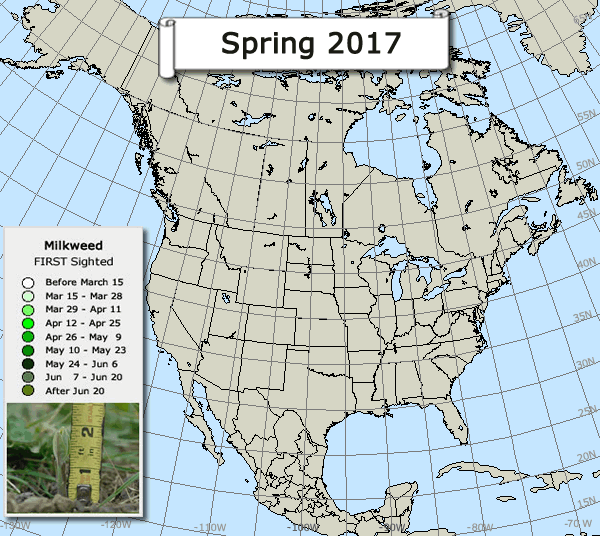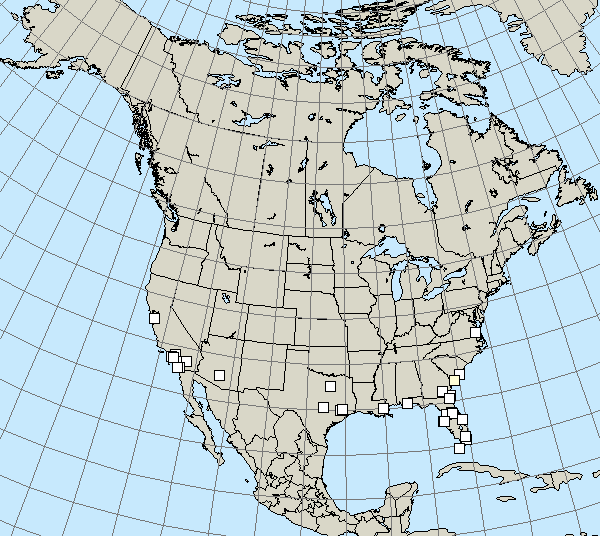Almost There
Monarchs Reach Manitoba
The migration continued to expand into new territory this week. Multiple monarchs were reported from latitude 50°N in Manitoba where the lilacs bloom in June.
"I observed one monarch feeding on my lilac bush," wrote Dorothy Dilay on June 5th from Winnipeg.
Monarchs have been following a nectar corridor of blooming lilacs all spring. People have reported nectaring on lilacs for over 2 months, since early April in Kansas.
Stalled in Northeast
At the northeastern reaches of the migration trail, cold, rainy weather has stalled the migration for almost two weeks.
"When the jet stream plunges south, like this week, the weather often turns cooler and wetter than average. The pattern caused the storm system to stall," AccuWeather Chief Meteorologist Elliot Abrams said.
Let's watch for the monarchs to move north next week...
Report Your First
No matter when you see your first monarch, we want to know about it. Your sighting is important even if other people have already reported from your region.
Nectar and Reproduction
The demands of reproduction require energy. Females are producing hundreds of eggs and flying in search of milkweed. Males are patrolling milkweed plants to find females, and producing energy-rich spermataphores for mating.
For Your Butterfly Garden
Find the best nectar plants for your region. Identify flowering times so you can provide nectar from the time monarchs arrive in the spring until they migrate south in the fall.
"We can't just plant milkweed. We have to plant nectar plants too," said Ina Warren.



